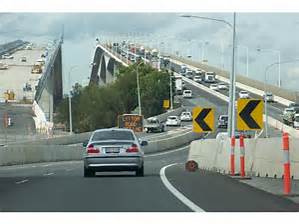Travel competence is usually concerned with day-to-day travel. If people need to travel, they can consider alternative modes. However, before people can be expected to use the ‘other’ modes they have to know how to use them. They don’t necessarily feel in a position to do that, or to experiment. They may have to try something different if, for example, there is a strike on the public transport they normally use to get to work. They may decide to try cycling to work. Wobbling along on an old bike that was last ridden years ago, amidst the congestion of many people forced to drive to work, is not conducive to road safety. Ensuring that people are in a position to use all the available modes makes people more resilient when transport problems arise, as well as more flexible in their day-to-day life.
Travel competence is a human-centered approach to managing travel demand.
Being in a position to use all the available modes is described as being ‘travel competent’. This means that a person has the ability to make an informed choice amongst the available modes and carry it through. It doesn’t mean that everyone can use every mode of transport available. It means that they are able to use the ones that have potential for them. Schemes such as TravelSmart, TravelWise, driving lessons and cycling proficiency schemes, which aim to promote non-car modes, are steps on the way to travel competence. Travel competence is a human-centered approach to managing travel demand. It doesn’t involve spending billions on new infrastructure, but instead it calls for educating people to make the best use of what’s available.

How does it provide a triple win?
Health, whether human or relating to the environment, is not a simple thing. On the contrary, it’s the end result of the combination of many factors. The choice of mode of travel cannot realistically promise to solve all of a person’s health problems or save the environment. Having said that, the way that travel is undertaken can have a significant effect on health. For example, the health benefits of active transport (walking and cycling) include increased cardiovascular fitness, increased muscle strength and decreased body fat levels. Driving has psychological benefits for the driver, and along with public transport, makes travel accessible for people who aren’t physically able to use more active modes of transport, thus enhancing their sense of control. Changing travel behavior by enhancing a person’s travel competence has the potential to have a positive impact on three aspects of health:
- Personal/public health:
- physical health: we all need exercise. Public transport, walking and cycling all have exercise as part of the activity, to a greater or lesser degree, and to a greater degree than using a personal motor vehicle. Therefore, being travel competent opens up a wider range of possibilities to obtain incidental exercise as part of everyday life.
- mental health: by empowering people, travel competence provides alternatives and opens up opportunities, thus enhancing personal control and reducing stress. This is particularly important for people who, for one reason or another, don’t have the ability to travel independently. The stress may be related to difficulties in completing a trip, for example, delays due to congestion) or related to the design of the system that shares the transport corridor with other modes.
 Travel competence is a human-centered approach to managing travel demand. It doesn’t involve spending billions on new infrastructure, but instead it calls for educating people to make the best use of what’s available.
Travel competence is a human-centered approach to managing travel demand. It doesn’t involve spending billions on new infrastructure, but instead it calls for educating people to make the best use of what’s available.
2) The health of the environment
Avoiding travel in the vicinity of modes which produce air pollution provides cleaner air to breathe. Poor air quality is implicated in some medical conditions and has environmental implications as we all know. Travel competence isn’t judgmental, nor is it a prescriptive concept. There is no one ‘ideal’ mode, nor does travel competence aim to move people away from one mode and onto another specific mode. Instead, it empowers people (by raising their awareness of alternative modes), to make optimum decisions about transport to fit their situation. Thus, it allows them, if they choose, to travel with maximum sustainability for the situation. For example, they can minimize the output of pollution (such as hydrocarbons, water vapour, heat and noise) and congestion (on roads or in public transport vehicles).
3) Health equity
By enhancing travel competence, opportunities to travel may be opened up. This can allow people access to resources, such as healthcare and sources of good food, that might otherwise be out of reach.

Brisbane, Australia.
Positive Example
An example of the advantages of being travel competent occurred when a road in Brisbane, Australia, was closed suddenly in 2006 because of the discovery of a hairline crack in an approach ramp. Surveys of traffic revealed that the incident had caused little change to traffic to the north of the Brisbane River, where there had been a TravelSmart initiative going on at the time of the incident. The number of people who both took part in the initiative and who reported being affected by the closure was half the city average. The number who both took part in the initiative and changed mode because of the incident was twice the city average. It would appear that those people taking part in the TravelSmart initiative were less likely to have a problem with travel when a road was closed.
